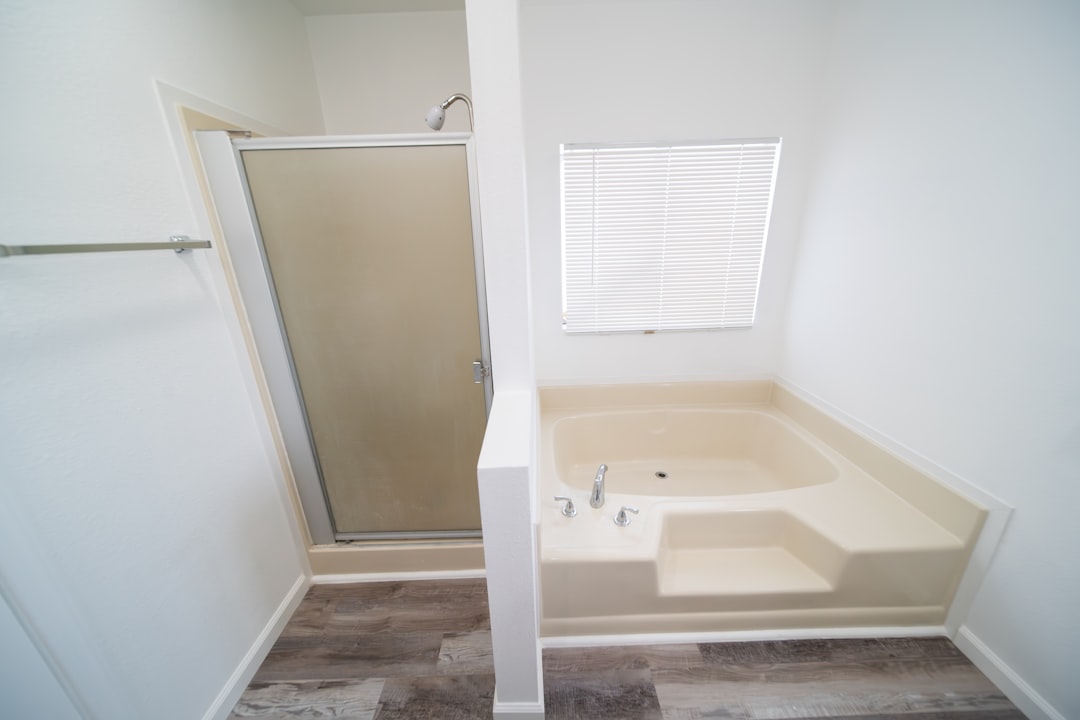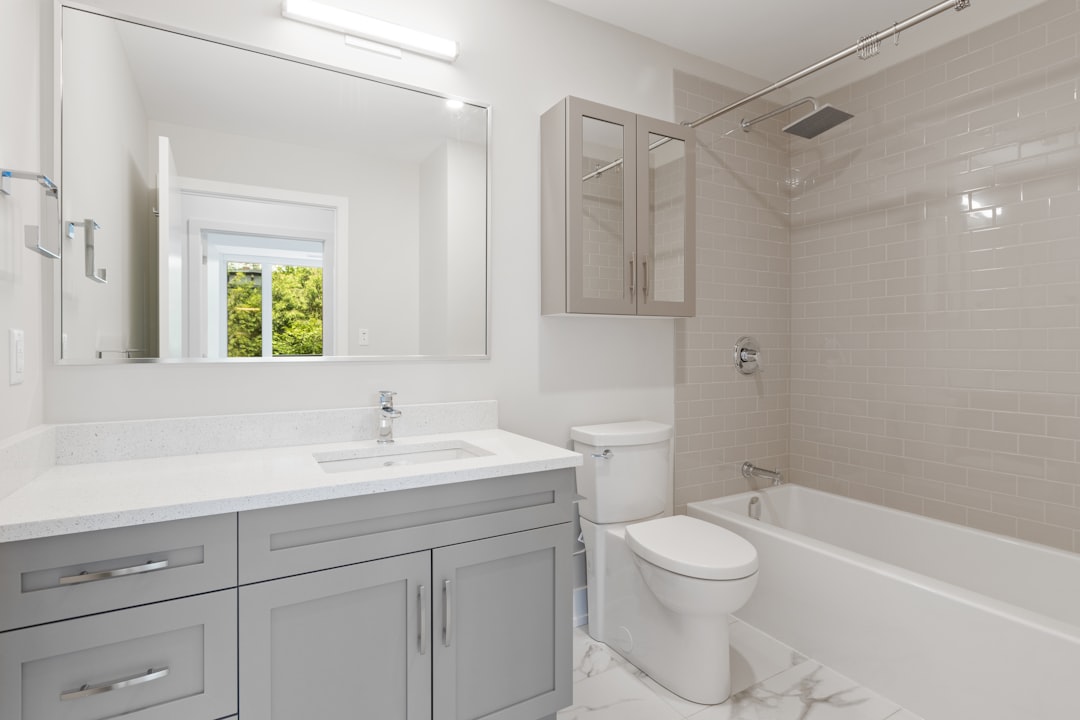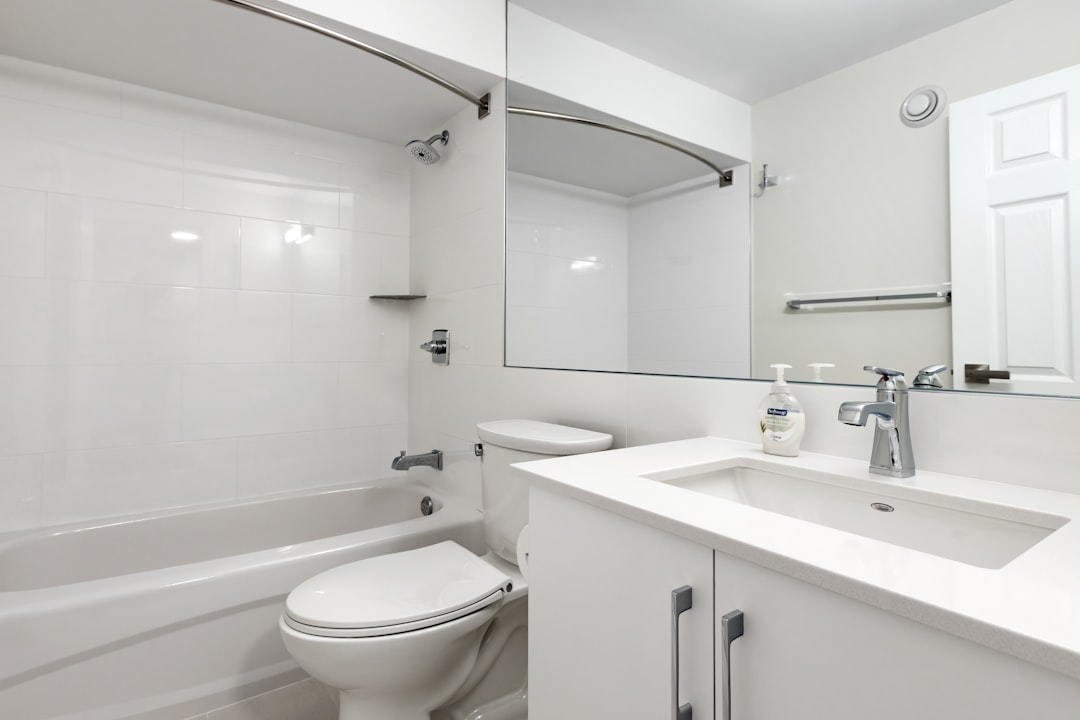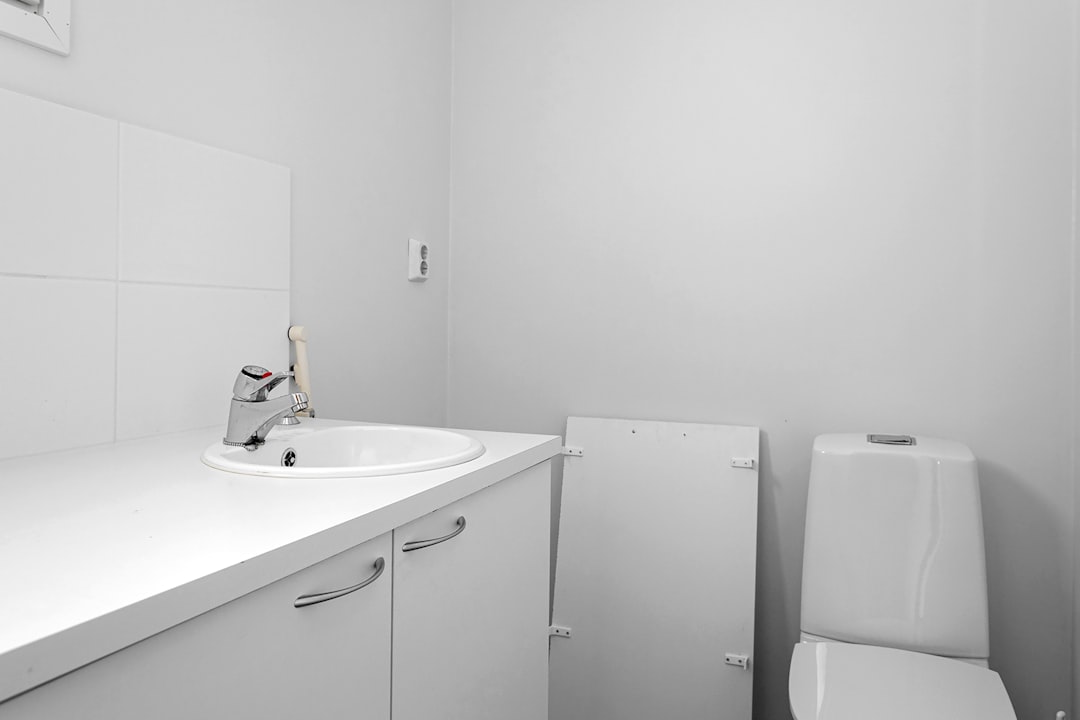

Engage prospects with a scan and streamline customer engagement with FREE QR code marketing tools by Sona – no strings attached!
Create a Free QR CodeFree consultation

No commitment

Engage prospects with a scan and streamline customer engagement with FREE QR code marketing tools by Sona – no strings attached!
Create a Free QR CodeFree consultation

No commitment
In today’s digitally driven world, QR codes have evolved from a novelty to a strategic powerhouse that connects offline engagement with online action. For bathroom remodeling contractors, they create a direct and frictionless bridge from print, signage, and in-home materials to measurable actions like quote requests, consultations, and reviews. Homeowners can scan with their phone camera in seconds, no app required. This simplicity removes the friction that often stalls interest before it turns into a lead.
Bathroom remodeling is hyper local and trust based. Prospects often discover you through yard signs, neighborhood word of mouth, and showrooms, but traditional materials do not capture who is interested or how to follow up. QR codes change that by turning every physical touchpoint into a digital gateway that captures intent, attributes performance, and starts an automated conversation the moment someone scans.
By integrating QR codes across your touchpoints, you can track every scan, learn which materials and neighborhoods drive the best responses, and engage faster than competitors. With platforms like Sona QR, contractors can generate dynamic codes, manage destinations, attribute revenue in Sona.com with offline attribution, and trigger automated follow-up to convert curiosity into booked consultations and signed projects.

QR codes bridge the gap between physical touchpoints and digital outcomes, making it easier to achieve real business goals like increasing consultation bookings, collecting Google reviews, and moving prospects through the pipeline faster. When homeowners can scan to schedule a walkthrough or view a personalized gallery, they are more likely to act at the moment of interest, not hours later when attention fades.
A persistent frustration for many contractors is not knowing whether printed materials or yard signs produce real leads. Without a digital bridge, interested homeowners may read your flyer yet never take the next step, especially if it requires typing a URL or finding your site later. QR codes reduce this lag. They connect the scan to a pre-filled form, instant booking, or a targeted offer, which shortens the time to contact while providing attribution for every campaign, as shown in QR code marketing strategies.
Bathroom remodeling contractors are moving from analog processes to automated, data rich systems. QR codes and platforms like Sona QR provide the infrastructure to track offline engagement, qualify high fit leads, and trigger immediate next steps. This workflow closes the timing gap that often results in lost jobs and helps tie marketing spend to real outcomes.

QR codes solve friction in the home improvement buyer journey that typically blocks visibility and slows follow-up. They give homeowners an easy action to take when they see your brand in the neighborhood and give your team the data to engage right away, aligning with proven contractor marketing strategies.
For remodelers, the advantages are tangible across common materials and moments:
When you add scannable CTAs to appointment cards, yard signs, flyers, and project boards, every surface becomes a digital handoff to your booking and nurturing systems. That is how you transform brand awareness into pipeline, and pipeline into revenue.

Choosing the right QR format ensures a smooth experience and precise measurement. Bathroom remodelers benefit from formats that enable fast contact capture, easy booking, and effortless follow-up.
Dynamic QR codes are especially useful in this vertical because you can edit destinations, add UTM parameters, and attribute scans without reprinting. With Sona QR, you can generate and manage all formats in one place, map scans to campaigns, and keep your offline assets aligned to live marketing priorities.

Growth stalls when your best leads remain anonymous. Neighbors walk by a jobsite, event attendees take a brochure, or showroom visitors browse samples, but if there is no digital handoff, their interest stays invisible. QR codes create that bridge, capturing micro conversions that feed your pipeline. See practical ideas in QR codes for home repair.
Start by deploying QR codes where your offline audience already interacts with your brand and projects:
By concentrating on neighborhoods around your jobs, showroom traffic, and post project materials, you will build a system that boosts lead quality, improves attribution, and turns offline visibility into measurable growth.

QR codes deliver the most impact when they meet homeowners at a specific moment, offer immediate value, and trigger a defined action. These use cases align with common interactions across the remodeling journey.
Each of these use cases is designed to convert passive interest into trackable engagement. With dynamic codes, you can test landing pages, offers, and follow-up sequences to raise conversion rates and accelerate the path from scan to scheduled estimate.
A frequent challenge for bathroom remodeling contractors is knowing who is serious and where they are in the buying journey. QR scans are intent signals. They tell you what someone was interested in, where they were, and when they engaged, so you can segment and retarget with precision.
By issuing unique codes for different touchpoints, you automatically build segments that align with intent and stage. A neighbor who scans a yard sign is at a different point than a homeowner who scans a financing sheet in your showroom. Use that context to tailor content, timing, and channel.
When you align scan signals to lifecycle stages, your marketing becomes timely and relevant. Prospects see the right offer at the right moment, and your team focuses on the highest fit opportunities.
True campaign effectiveness requires connecting physical and digital touchpoints so you can attribute results across the funnel. QR codes give you the connective tissue that tracks how print, events, and media contribute to traffic, leads, and revenue.
Use them to enhance the channels you already rely on and to capture data from surfaces that used to be unmeasurable:
QR codes serve as the offline onramp to your digital marketing engine. They unlock a new layer of attribution for channels that were once hard to measure. With a centralized platform like Sona QR, you manage codes, monitor performance, and sync scan data with your CRM and ad platforms to orchestrate a truly connected funnel.
Launching a high performing QR program does not require a large team, but it does benefit from a clear process. Align your code type, creative, placements, and analytics from the start so you can iterate quickly and prove ROI.
Begin with one or two high impact use cases such as consultation booking at jobsites and review collection at project close. Then expand to direct mail, showroom assets, and events once you have benchmarks. The steps below will help you plan, deploy, and optimize.
Clarify the business outcome you want, such as increasing booked consultations at spring home shows, capturing more reviews during closeout, or turning yard sign views into neighborhood estimates. Tie each QR code to one outcome so you can attribute performance with confidence.
Identify the physical assets that will carry the code. For bathroom remodeling, high leverage placements include yard signs, direct mailers, showroom displays, leave behind booklets, and invoices. Align the CTA to the context. For example, use Scan to see this project’s budget range on a yard sign, and Scan to book your upgrade consult on a closeout checklist.
Choose static codes for unchanging destinations such as a vCard or a PDF brochure. Use dynamic codes for campaigns that need tracking, retargeting, or destination changes over time.
Dynamic QR is recommended for most revenue impacting campaigns. With Sona QR, you can update destinations without reprinting, add UTM parameters, and view scans by time, device, and location. This flexibility protects your print spend and ensures you can optimize based on real data.
Brand your code and frame it with a clear CTA like Scan for a free quote or Scan to see before and after photos. Ensure sufficient contrast, adequate white space, and a size that suits viewing distance. Yard signs typically need larger codes than brochures.
Test scannability on multiple smartphones, at different angles, distances, and lighting conditions common to the placement. For example, test yard sign codes in midday glare and dusky light; test showroom codes under warm lighting. Catching issues now prevents missed scans in the field.
Roll out your codes on the assets most likely to reach your target homeowners. For bathroom remodeling, prioritize jobsite signage, neighborhood mailers, showroom assets, event booths, and post project paperwork. Match the offer and landing page to the audience and context.
Stagger launch dates to isolate the impact of each channel. Label your codes by placement and campaign in Sona QR so you can compare scan rates, conversion rates, and cost per opportunity across yard signs, mailers, and events.
Monitor scan volume and conversion behavior in your analytics. Look for drop offs between the scan and the form or booking step, and test adjustments to your landing pages, copy, and CTAs to improve performance.
Feed scan events into your CRM using Sona QR integrations so you can trigger SMS and email follow-up within minutes. A prompt message that confirms interest and offers immediate scheduling can raise conversion rates significantly and reduces the window for competitors to engage first. For teams on HubSpot, see Sona’s HubSpot integration guide for unifying scan data with outreach.
For bathroom remodeling contractors, success is not just more scans. It is connecting scans to booked appointments, estimates, proposals, and closed deals. Without attribution, it is hard to direct budget toward the materials and neighborhoods that truly drive revenue.
With advanced QR solutions, you can measure the journey from scan to sale in detail. Start by tagging each code with campaign and placement parameters. Then connect scan sessions to form fills, contact records, and pipeline stages in your CRM. Over time, you will see clear patterns that inform creative, offers, and geographic focus.
Imagine a flyer campaign that drives 30 scans, 10 appointment requests, and 3 signed remodel contracts. With Sona QR and Sona.com, you will track each step, proving ROI and guiding your next creative and targeting decisions with confidence.
Many QR programs plateau because they use a single code for everything, lack clear CTAs, or fail to automate follow-up. Expanding success means making every asset count and ensuring that no intent signal goes cold.
Focus on separating codes by campaign and placement, instrument every destination with UTM parameters, and connect scan events to workflows that keep momentum going. Small operational improvements can yield outsized gains in conversion and attribution.
Adopting these best practices turns QR from a novelty into a scalable, performance driven channel. Each scan becomes a lever you can pull to generate more appointments and more high quality work.
Contractors are seeing meaningful results when they use QR codes to solve specific gaps like anonymous neighborhood interest, slow feedback loops, and missed referrals. The key is to pair a context specific CTA with a fast path to value and automated follow-up.
Consider how these approaches map to your own goals. Start with a pilot in one neighborhood or event, measure outcomes, and iterate. The most effective executions combine relevance, convenience, and data capture.
Creative addition: Place QR codes on cost estimator worksheets, both in the showroom and as downloadable PDFs. Homeowners scan to access current pricing models and are entered into a nurture sequence with tailored content and a consultation offer. This turns casual interest into a qualified conversation.
Teams that get the most from QR codes align codes to buyer intent, make scanning effortless, and connect the dots between offline and digital engagement. They also prepare staff to promote scanning with a clear benefit statement and ensure that automation handles the first follow-up.
On the other hand, campaigns underperform when they rely on a single generic code, when CTAs are vague, or when landing pages are slow and mobile unfriendly. Resolve these issues early and you will see scan volume, conversion rates, and revenue attribution improve.
Common pitfalls include using one code across multiple campaigns, which muddies attribution; deploying generic CTAs like Learn more, which depress conversion; and lacking automation, which means leads go cold while competitors respond. Expert insight: “QR codes have allowed us to instantly connect offline interest with our digital consult process, doubling our conversion rate from yard signs and flyers,” said the marketing director at a regional remodeler.
QR codes are more than a shortcut; they are a modern strategy for bathroom remodeling contractors to digitize every customer interaction and track the outcomes that matter. Pain points like missing high value prospects, slow or missed follow up, and poor attribution no longer have to be accepted as the status quo. The right approach turns every physical surface, from yard signs and brochures to invoices and jobsite banners, into a high value digital entry point. For best practices, see QR codes in marketing.
By weaving QR codes into your multichannel marketing strategy, you deliver fast and seamless experiences that move homeowners from curiosity to conversion, all while capturing actionable data for continuous growth. With an integrated platform like Sona QR and analytics in Sona.com, your business connects offline marketing spend to measurable revenue impact, making every scan a signal of intent and every campaign a step toward winning more high quality remodeling projects. Start creating QR codes for free.
QR codes have transformed bathroom remodeling contractors from relying on traditional marketing into leveraging dynamic, measurable growth tools. Whether it’s attracting new clients, enhancing customer engagement during project planning, or streamlining access to portfolios and reviews, QR codes replace outdated methods with instant, mobile-friendly actions that capture valuable data and boost conversions.
Imagine knowing exactly which brochures, signage, or job site displays generate the most leads—and being able to update offers or showcase new designs instantly without reprinting materials. With Sona QR, you can create dynamic, trackable QR codes in seconds, monitor every scan in real time, and link those interactions directly to your revenue growth. No missed opportunities, just smarter marketing and more booked projects.
Start for free with Sona QR today and turn every scan into a new client, a completed remodel, or a glowing referral.
Best practices include using unique QR codes for each campaign and placement, adding clear calls to action, automating follow-up communications, testing code scannability in real conditions, and integrating QR scan data with your CRM for timely responses and accurate attribution.
Look for contractors who use QR codes to provide easy access to project galleries, reviews, and consultation bookings, and who track offline engagement to respond quickly and personalize follow-up, demonstrating professionalism and data-driven marketing.
While the article does not specify average costs, QR codes can link homeowners to cost calculators and pricing models that provide personalized estimates during the remodeling decision process.
The latest trend is integrating dynamic QR codes across physical touchpoints like yard signs, brochures, and invoices to connect offline interest with online actions, enabling real-time tracking, automated follow-up, and measurable ROI.
Ensure success by deploying context-specific QR codes with clear calls to action, using dynamic codes for flexibility, tracking scan data to segment and retarget leads, automating timely follow-up, and training staff to encourage scanning and engagement.
QR codes bridge the gap between offline marketing and online engagement, enabling contractors to capture leads instantly, track campaign effectiveness, reduce response time, and convert neighborhood interest into booked consultations and projects.
Useful QR code formats include web links to quote forms or galleries, vCards for contact sharing, pre-filled SMS or email templates for inquiries, Wi-Fi access for showrooms, and app download links for customer portals.
Effective placements include jobsite yard signs, showroom signage, direct mailers and flyers, invoices and quotes, local event materials, and project closeout documents to capture interest and drive conversions at various customer journey stages.
QR codes enable tracking scans by time, location, device, and campaign, connecting those scans to downstream actions like form submissions and booked consultations, allowing contractors to attribute revenue and optimize marketing efforts based on real data.
Common pitfalls include using a single generic QR code for multiple campaigns, vague calls to action, slow or non-mobile-friendly landing pages, lack of automation for follow-up, and failure to train staff to promote scanning effectively.
Use Sona QR's trackable codes to improve customer acquisition and engagement today.
Create Your FREE Trackable QR Code in SecondsJoin results-focused teams combining Sona Platform automation with advanced Google Ads strategies to scale lead generation

Connect your existing CRM

Free Account Enrichment

No setup fees
No commitment required

Free consultation

Get a custom Google Ads roadmap for your business






Launch campaigns that generate qualified leads in 30 days or less.
